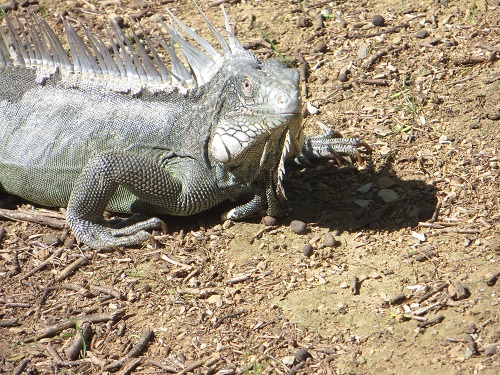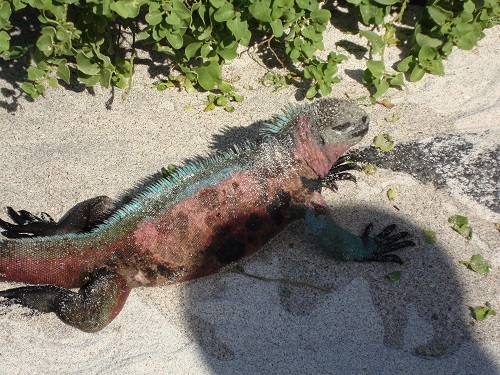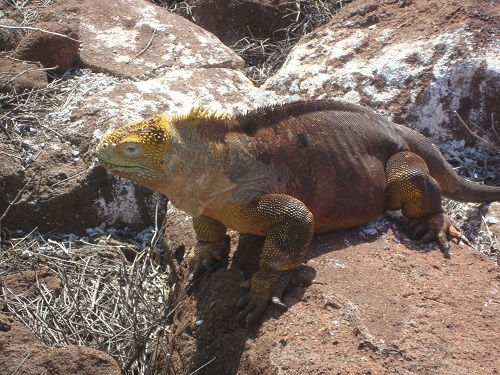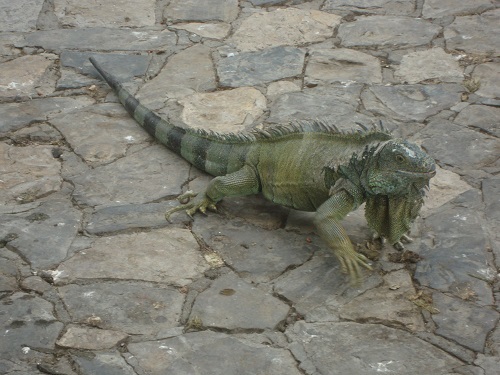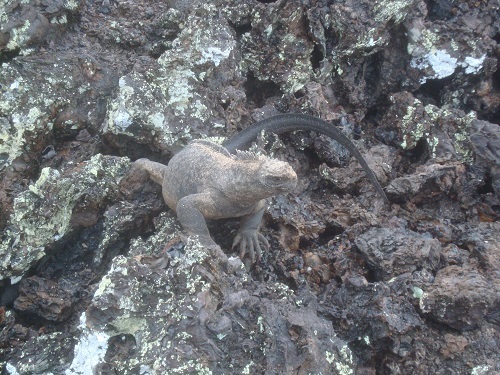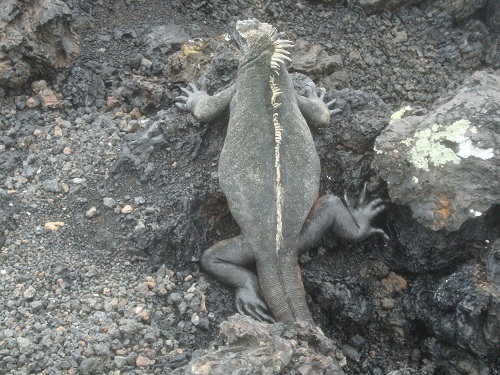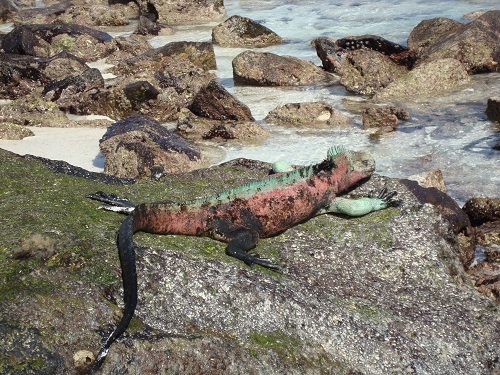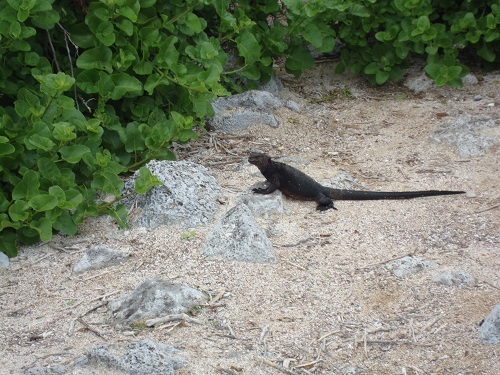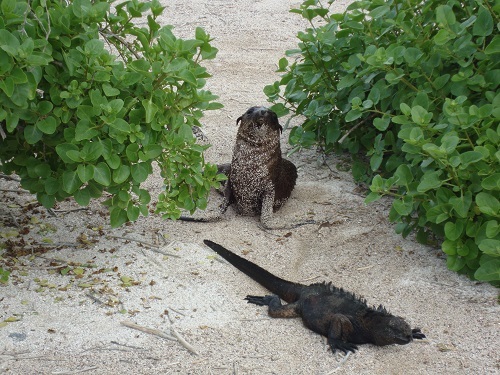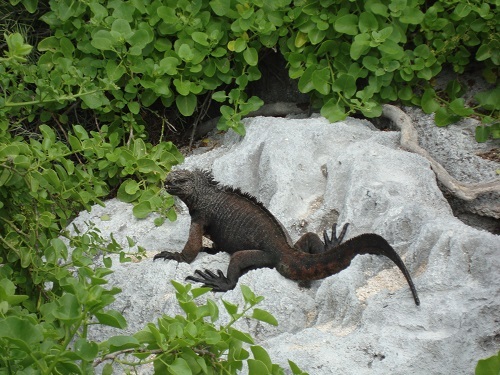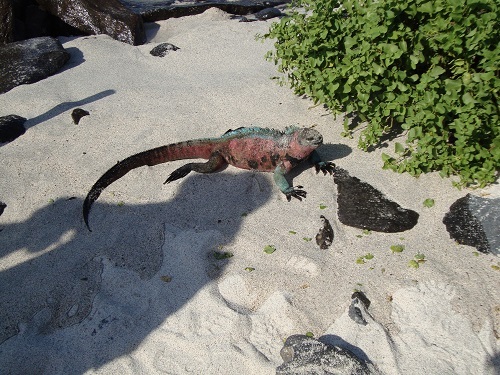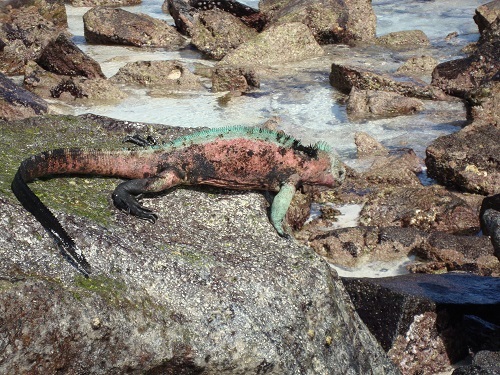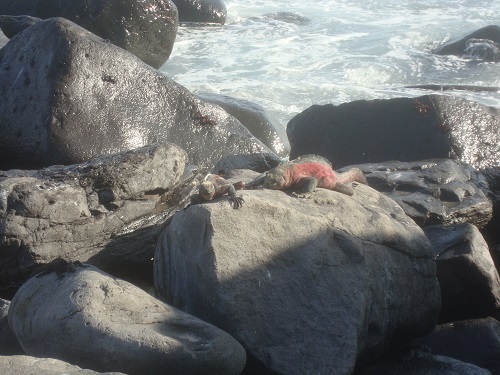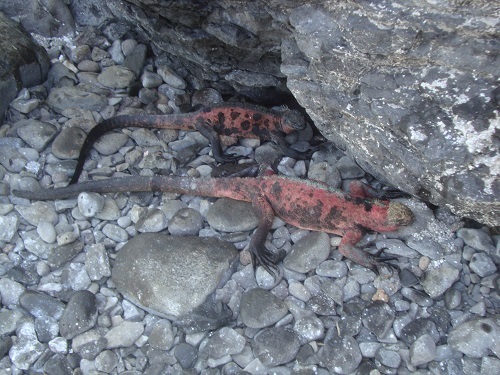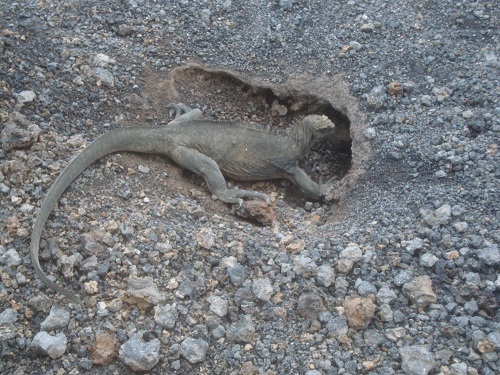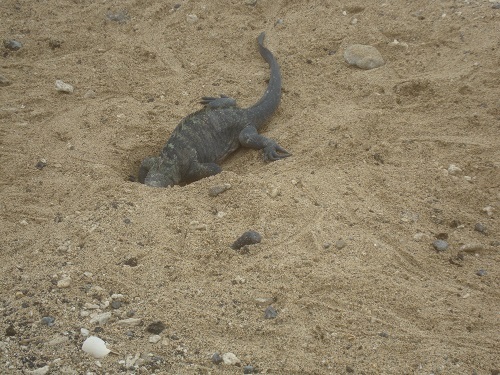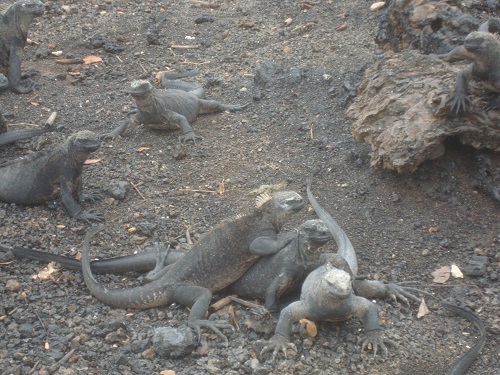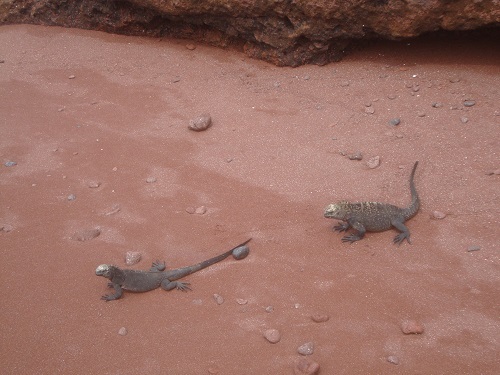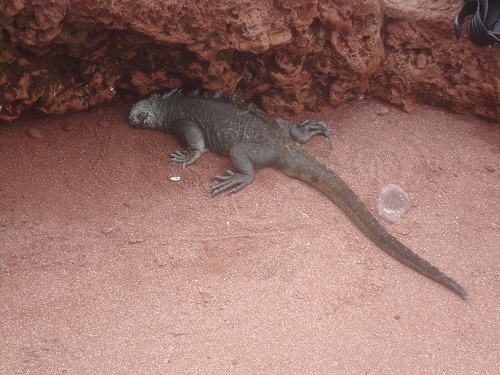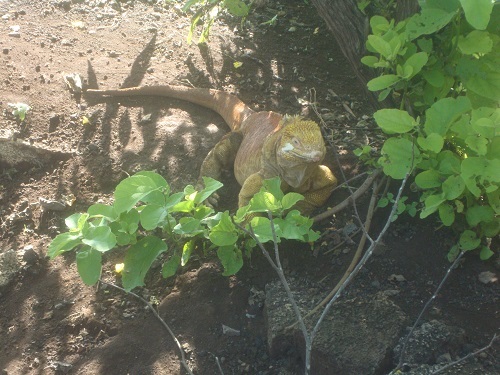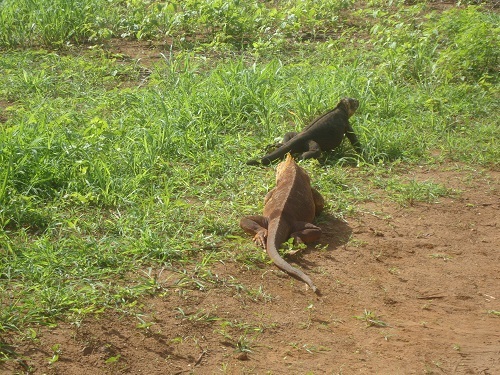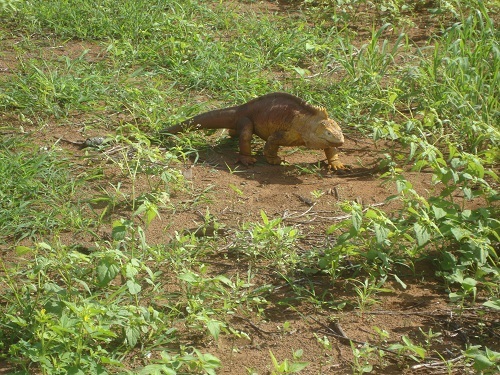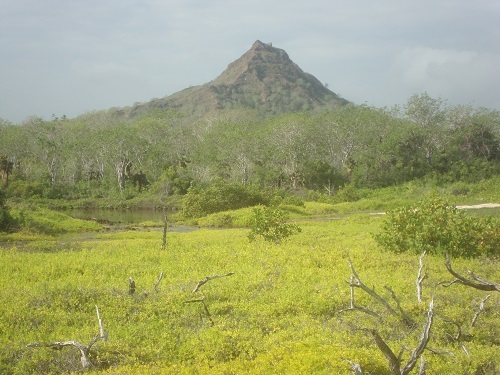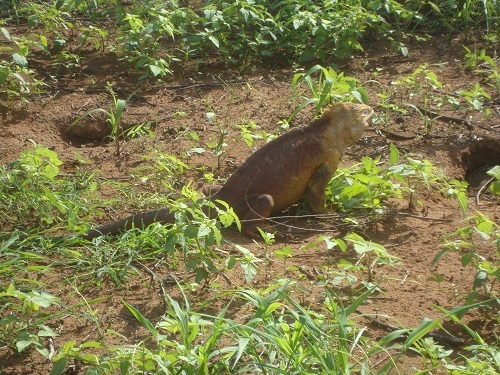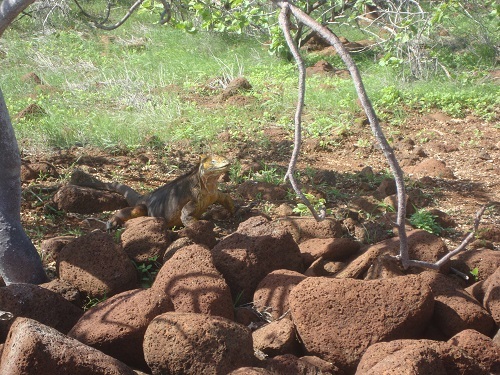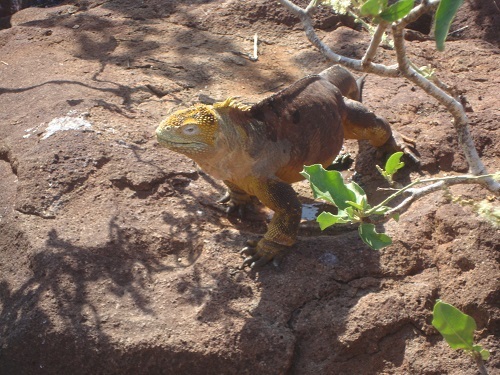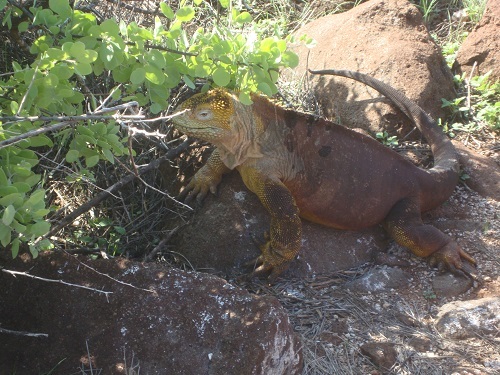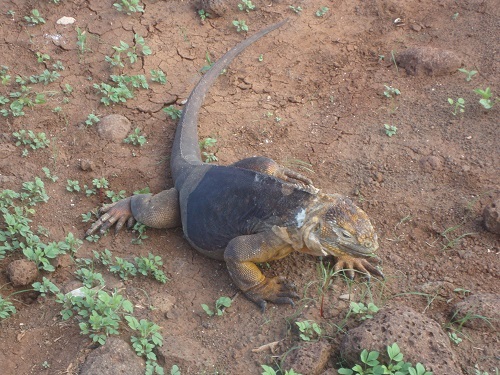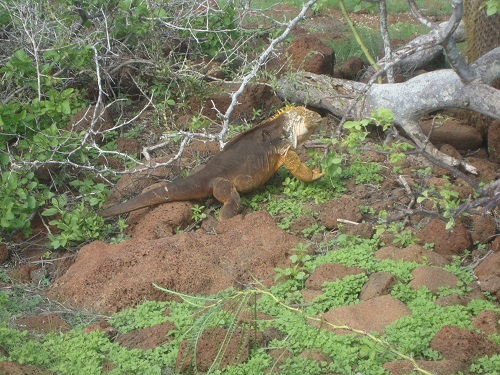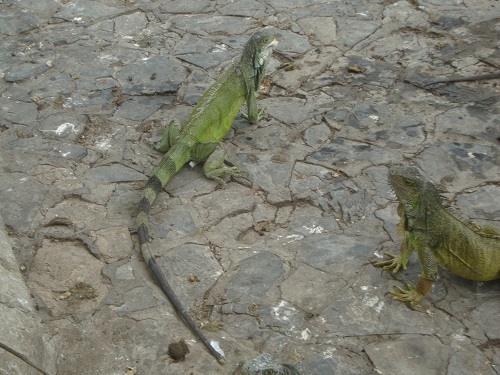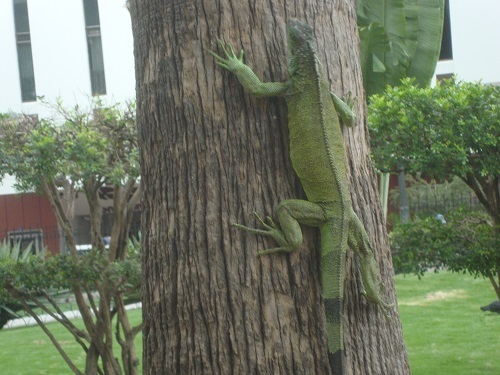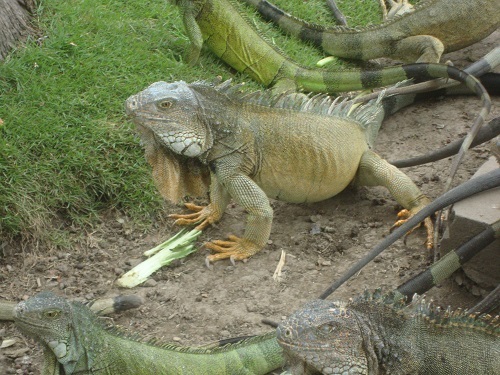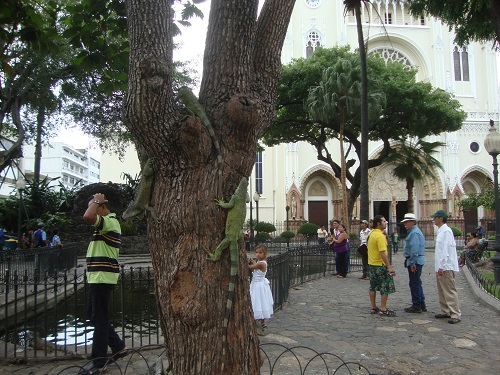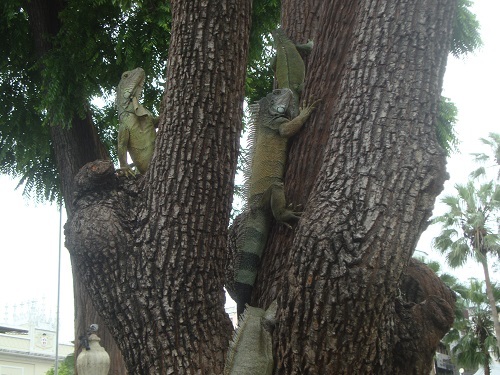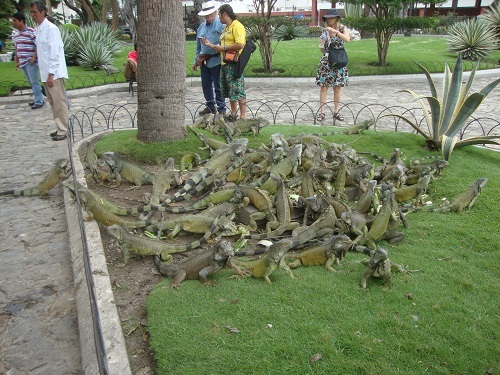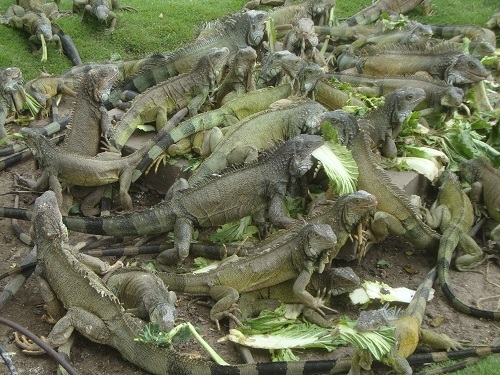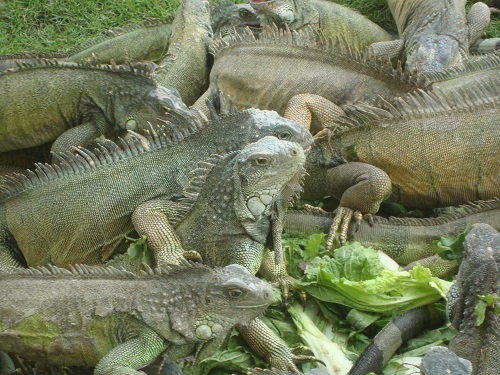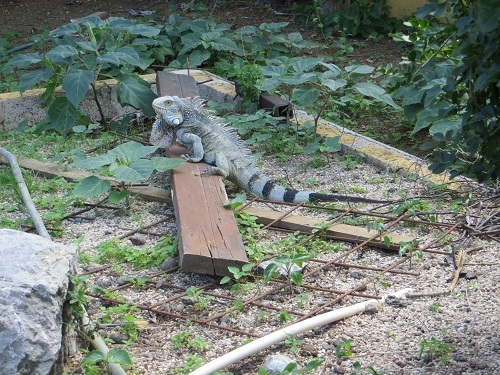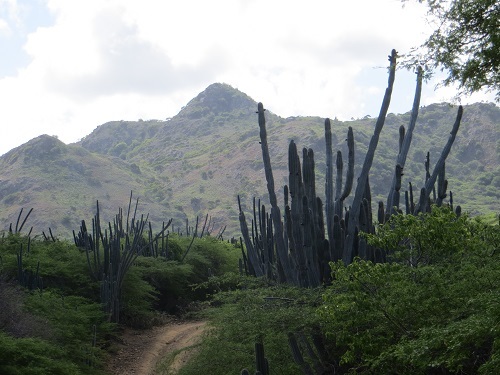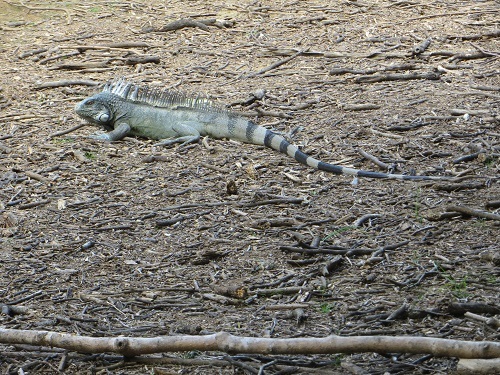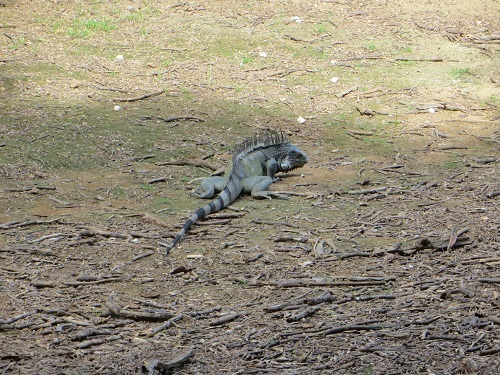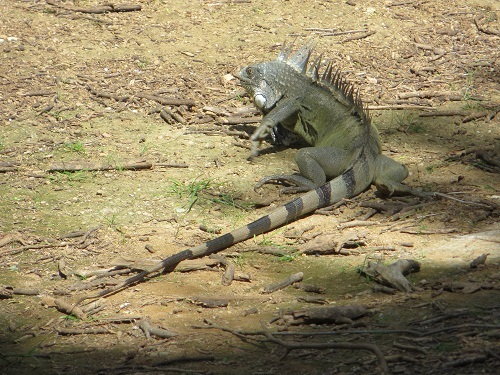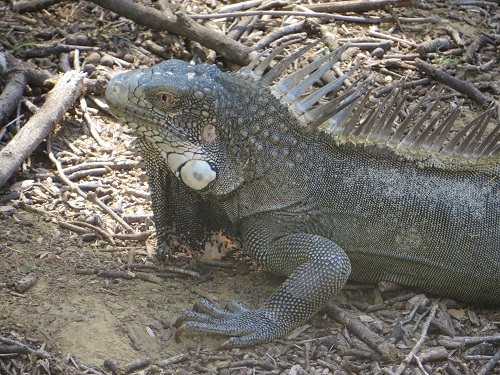No need to biologically engineer Jurassic Park. Just put on magnifying glasses and go down to Iguana-dom, that realm where every scale, spine, spike, crest, dewlap and wart screams dinosaur.
And that's without mentioning their third eye, that light-sensing scale atop their heads, or for males their two penises - only one is used at a time, often in alternating copulations. Or for that matter their heavily swiping tails, about half their length of up to six feet.
These fearsome-looking mini-dinosaurs, denizens of Central and South America and the Caribbean, come in a variety of colours, from green to grey to golden yellow, and even black suffused with a deep red blush for marine males when they get all hot and bothered in the mating season.
Their name comes from Iwana; that's what the indigenous Taino Arawak of the Caribbean called them before that other pirate of the Caribbean, Christopher Columbus, sailed in to spoil their fun.
And for all their monstrous looks, they're herbivores and totally harmless from the human point of view, becoming part of the diet in parts of tropical America and pets in others.
The Marine Iguana
Arguably the most extraordinary member of the family, this specimen is found only on the Galápagos Islands, away in the equatorial Pacific some 600 miles off the shores of Ecuador.
When Darwin first saw them on his trot-around-the-globe he was not particularly enamoured. In fact he called them "hideous-looking, most disgusting, clumsy lizards, imps of darkness," offended that they're "as black as the porous rocks over which they crawl... They assuredly well become the land they inhabit."
Apart from the fact that there is a stark exotic beauty to the Galápagos, even the most bleakly volcanic among them, these fearsome-looking mini-dragons are anything but plain black, at least as far as the male is concerned when he is in heat, covered with deep red, pink and green blushes.
They diverged from the land iguana eight million years ago, sup only on algae that they forage in the ocean, diving as deep as 30 feet, and are quite snotty as they vent liquid out of their noses to rid their bodies of the overdose of salt from swimming in the sea.
They're labelled vulnerable, although believed to number in the hundreds of thousands. Not having had to deal with native predators during their millennia of non-human residence, they succumb to non-native intruders like rats, feral cats, dogs and pigs who feed on their eggs and young, as well to the microbial diseases humans harbour.
You can see them on many of the Galápagos Islands - crawling among baby seals on Lobos, males resplendent in their rutting colours, or basking among sea lions on Española and Floreana.
On Lobos
On Floreana
On Isabela, largest of the Galápagos at 60 miles long, you might not see hawks swooping down to gobble up baby turtles in a foreboding of the cannibalism Sebastian Venable suffers via Tennessee Williams' Suddenly Last Summer.
But the landscape certainly fits the picture - five volcanoes, a spikey pinnacled lava field from some alien planet, wall-to-wall marine iguanas building burrows with scampering long-clawed feet, or simply resting on the black rocks, staring at us nonchalantly.
On Isabela
On Rábida, they show up black against the strikingly maroon red sands.
On Rábida
The Galápagos Land Iguana
Darwin was none too enamoured of these, either - "ugly animals, of a yellowish orange beneath, and of a brownish-red colour above: from their low facial angle they have a singularly stupid appearance." he wrote.
Actually their colours are striking, though they do have a crown of warts. They can reach up to five or six feet long, weigh 25 pounds, and live up to 50 years, with males defending territory, or mating, with many a head bobbing, biting tantrum, and tail thrashing.
Once they were so numerous that Darwin and his crew couldn't find a single spot to pitch a tent because of their wall-to-wall burrows on Santiago Island. Since then all those on Santiago and many elsewhere have been wiped out by the introduction of pigs, rats, cats, and dogs. At present they're estimated to number between 5,000 and 10,000.
As we wend our way round Dragon Hill on the north-west side of Santa Cruz, my wife Rivka has a walking stick to help negotiate the odd slippery rock. The landscape is fantastic - green vegetation, large cacti, golden sand beach, a dark volcanic cone. She seems to be dreaming. Come on Rivka, move your effing self, shouts I, there's a dirty great fat yellow-orange land iguana right here!
On Santa Cruz
The prehistoric creature - the dinosaur in miniature, that is, not Rivka - looks up in contempt (Rivka also looks at me in contempt), straightens his hind legs and craps.
He must be at least twice the size of his marine cousin and has beautiful yellow and orange hues as opposed to the dull brownish female. Rivka comes puffing up - Jeez, it's like waiting for the second coming - as the iguana lays the last of his abundant lengthy turds.
On North Seymour, a large flat plate of raised lava - a large active volcano several million years ago until it eroded to its current high point of a few metres above the waves - they laze under bushes to avoid the sun, the orange and yellow standing out against the green. The subspecies here has a more slender crown of warts than those on Santa Cruz.
On North Seymour
The Green Iguana
This creature can be found from southern Brazil right up to Mexico and the Caribbean. They grow to five feet or more, weigh about 20 pounds, love climbing trees, while people in much of their range love having them on the dinner table, calling them 'chicken of the trees.'
If threatened, they push out their dewlap, puff up their bodies, bob their heads, swipe away with their tails, slash away with their claws, and give you a very nice gash with their sharp teeth.
If you want to see huge masses of them crawling all over each other, go to Bolívar Park opposite the cathedral in Guayaquil, Ecuador, where they gather and morph into a frenzied mountain of a food fight for the lettuce leaves thrown to them at various times of the day.
Scamper-scamper
Lesser Antillean Iguana
These tend to be grey, the males may have pink jaws and blue around the eyes, and they live on the Caribbean Islands. They're on the endangered red list due to habitat destruction, introduced predators like cats and dogs, competition for food with the introduced green iguana, being served up for human dinner, and miscegenation with green iguanas. They're now meant to be protected from hunting.
On the northern end of Curaçao, with magnificent views of Mt. Christoffel's soaring 1,227-foot peak, wild, craggy, multi-toothed, its ridge looking like the spikes on the back of some massive iguana, reel flesh and cold blood iguanas amble around in the dry forest below.
Mt. Christoffel and nearby denizen
Along the roadway tourists pose for photos with a dirty great tame iguana on their heads. A tour guide stacks one on his own head; he swings its enormous tail round in circles, then uses it to pick his nose.
And did you know that iguana soup is Aruba's answer to viagra?
At the north end of the neighbouring island of Bonaire, Washington-Slagbaai National Park provides wild scenery with thick groves of cacti, a vast bed of stoney coral pushed up by volcanic activity millions of years ago. A little tunnel of low trees leads to a small pool in a clearing, the 'village square' for the local iguana hordes, along with the local birds.
Down the path to iguana heaven
Two ancient bird watchers flit about in their wake, huge cameras at the ready, perching on low branches just like their quarry. Yours Truly perches likewise and starts up a conversation with the antique lady of the pair.
Talk about dialogue of the deaf. I'm jabbering away about iguana-this and iguana-that and all I get is smiles and grimaces. Finally she says: 'I'm deaf.'
[Upcoming blog next Sunday: Animal Planet on the Looney Front - Odd Birds, with Pouches, Antennae, Helmets and Seriously Challenged Landings]
______________
By the same author: Bussing The Amazon: On The Road With The Accidental Journalist, available with free excerpts on Kindle and in print version on Amazon.
Swimming With Fidel: The Toils Of An Accidental Journalist, available on Kindle, with free excerpts here, and in print version on Amazon in the U.S here.
